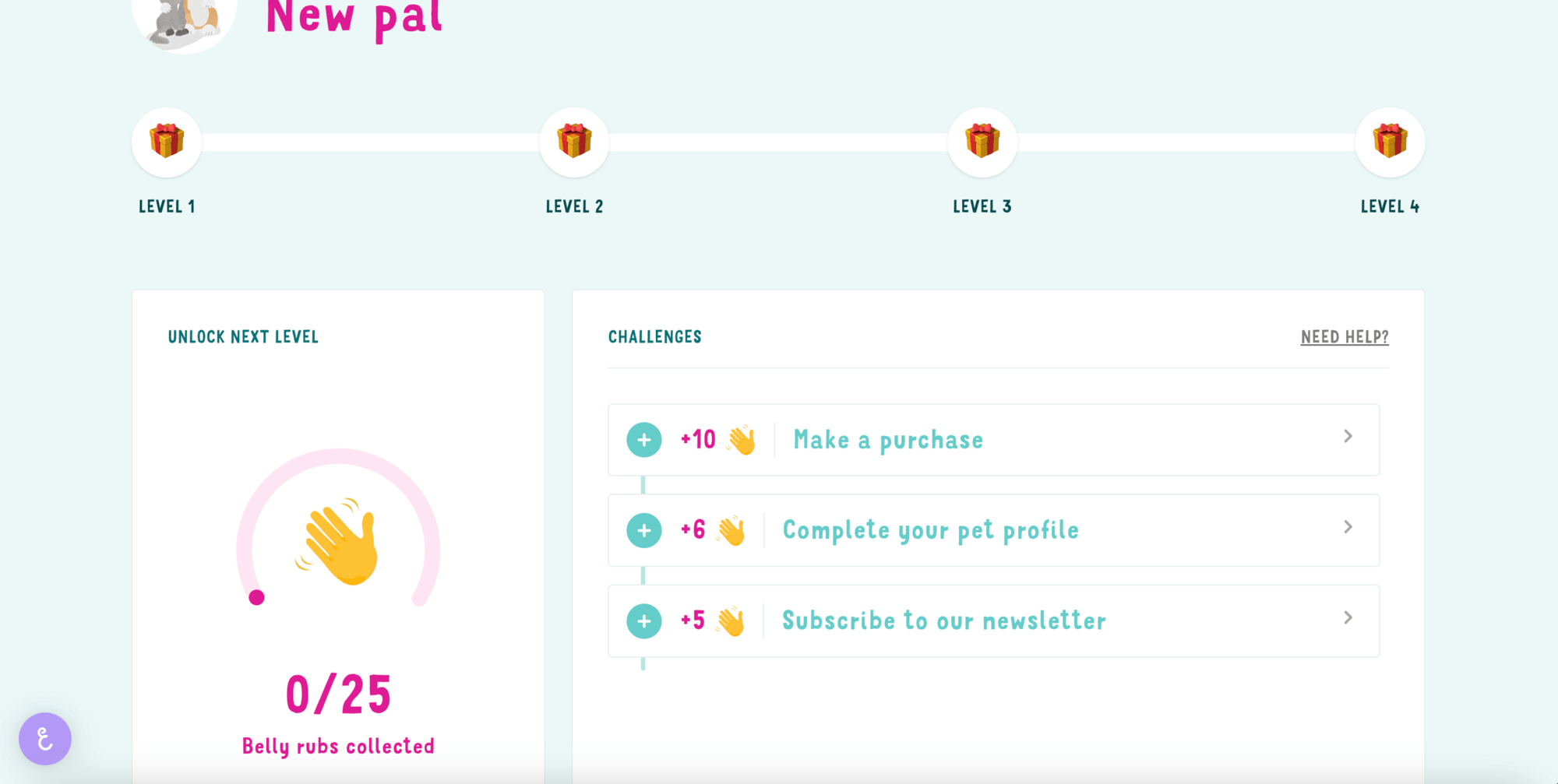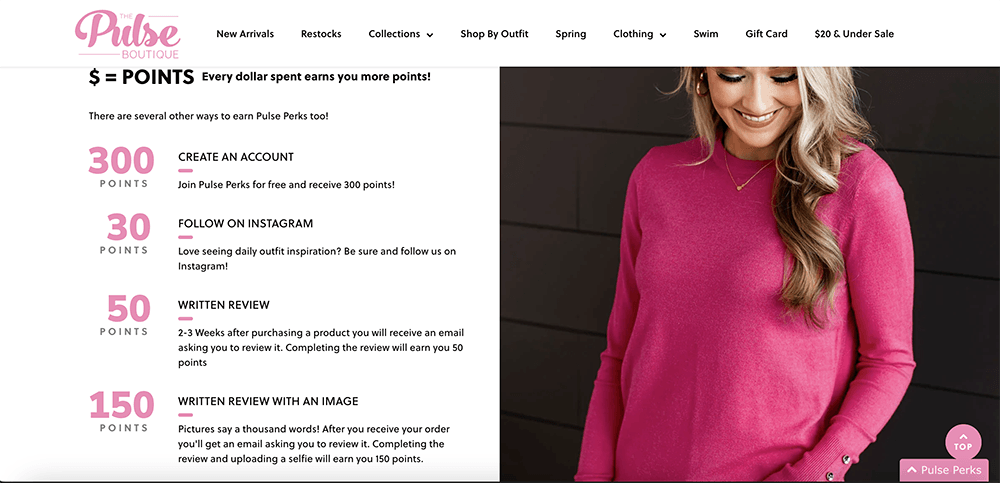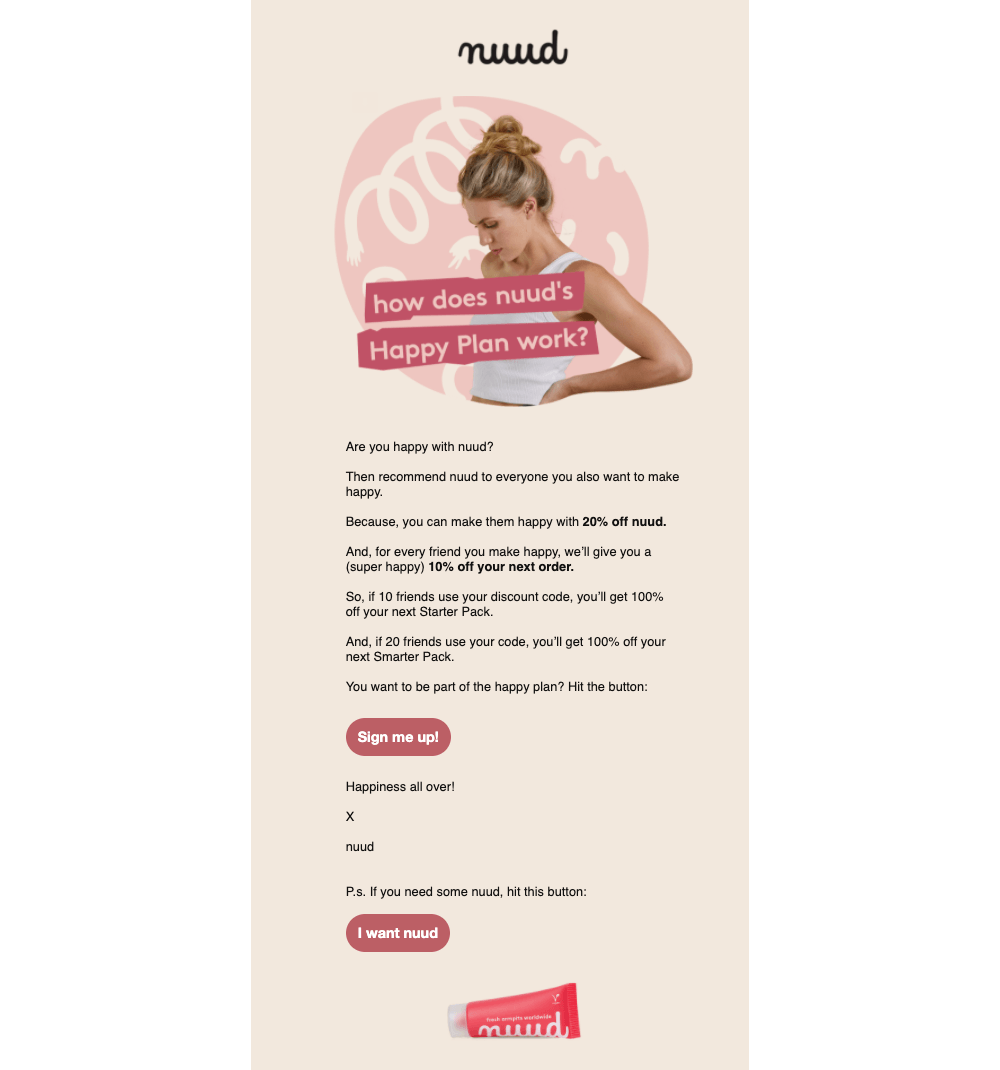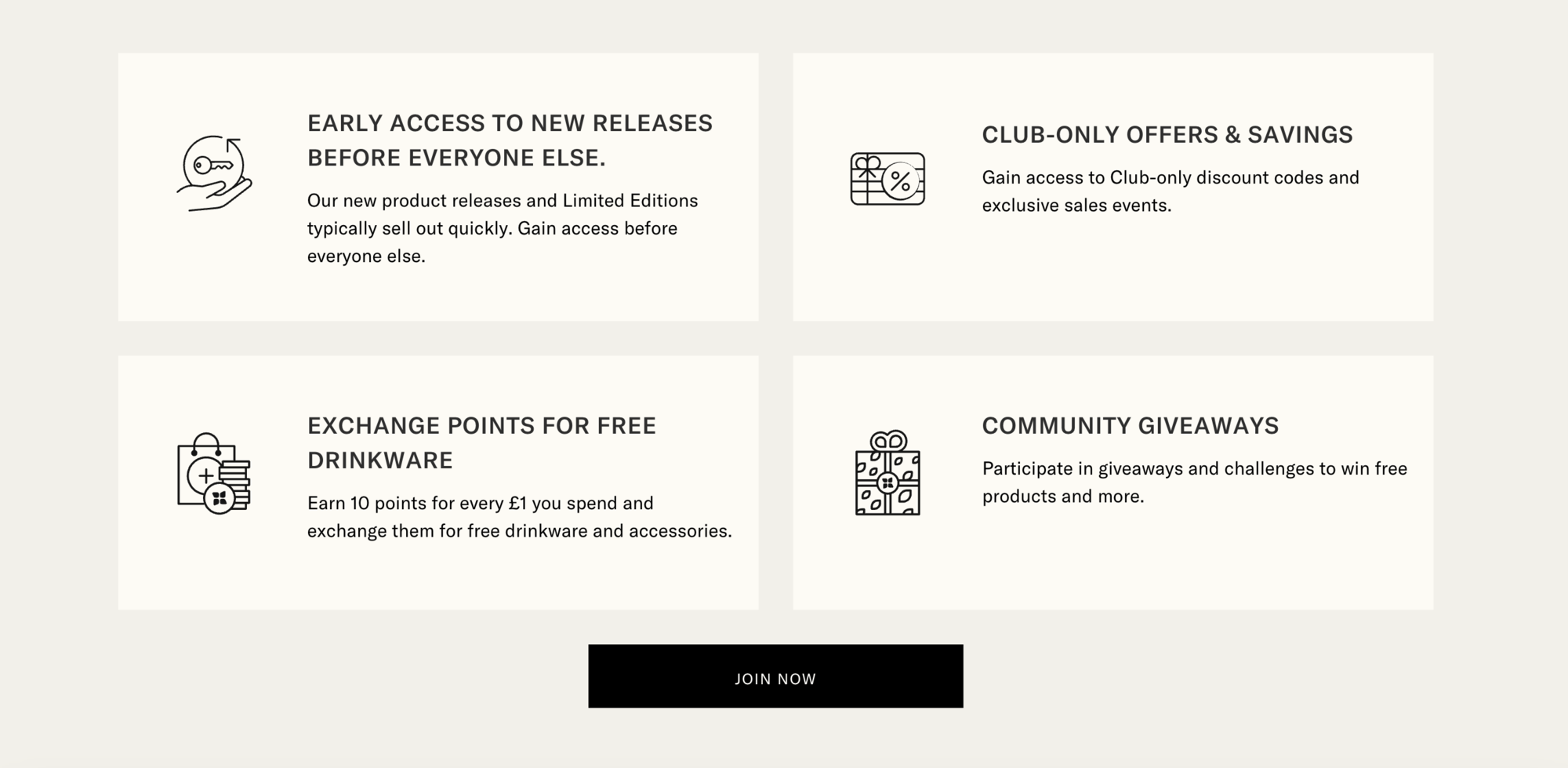Ecommerce was one of the few industries that have come out on top since 2020, and research from PwC shows the majority of consumers (63%) have purchased products directly from a brand’s website at least once between 2022 and 2023.
With more customers shopping from D2C brand websites, what can brands do to capture interest and keep customers coming back? The answer: create a loyalty marketing strategy (or otherwise called customer relationship marketing strategy) with a loyalty program.
Loyalty programs allow customers to earn rewards for purchasing products and engaging with the brand — and for the brand, loyalty programs help increase customer retention while offsetting acquisition costs and building up masses of zero and first-party data.
Research from Marigold’s 2024 Global Consumer Index found that 39% of consumers are more likely to engage with a loyalty program this year compared to last year and that 63% of them will pay more to shop with loyal brands.
However, despite more customers being open to joining loyalty programs, 68% of customers in the Marigold study said they “don’t actually feel loyal” to brands they habitually shop with. Therefore, a key ingredient is a personalized, relationship-focused loyalty program strategy.
So, in this guide, we’ll help you craft a winning loyalty strategy, provide tips on optimizing your program, and show you real examples of Shopify stores succeeding with their loyalty programs.
Building the foundation: Crafting a winning loyalty strategy
In this section of the guide, we’ll help you build a loyalty strategy foundation by covering four key areas: defining goals and objectives, understanding your target audience, choosing the right program type, and integration with your tech stack.
Defining your program’s goals and objectives
As with any type of marketing strategy, you need to figure out what the end goal is — what your strategy is trying to achieve and how to get there. For a loyalty strategy, this is especially important because your approach should differ depending on the goal and how that goal aligns with broader business objectives.
For example, let’s say your business is in a growth stage, and a broader business goal is to increase revenue by x% for the quarter. In this case, you’ll likely focus on cost-effectively acquiring new customers.
To help your brand achieve that goal within a loyalty strategy, you’d want to lean in on a built-in referral program to gain new customers while retaining existing ones.
Understanding your target audience
People have varying opinions on what they think adds value to them and what motivates them to stay loyal to a brand.
Ideally, you’ve already done the primary market research to find out who your target customer is. But when building a loyalty strategy, you should conduct more customer research and analysis to understand your ideal customer’s preferences, buying behaviors, and loyalty drivers.
This additional research pays dividends later in minimizing potential mistakes when crafting your loyalty program style and rewards.
Choosing the right program type
Loyalty programs aren’t all the same, and there’s a good reason for it — different program types appeal to various audiences and align better with particular brand goals.
Using the insights you gather from your research, you’ll have a better idea of what type of loyalty program best fits your brand’s needs. Here are a few examples of program types:
- Points-based program. A simple points approach is great for brands that sell items people typically buy frequently (e.g., personal hygiene products).
- Tier-structure program. A tier-structured program usually combines points with experiential rewards to incentivize long-term relationships and works well for brands that sell less-frequently purchased goods (e.g., fashion brands) or brands with a goal to build a community.
- Subscription-based program. A subscription-based program can refer to a program that centers around rewards for product subscriptions (e.g., milestone rewards) or a premium-model loyalty program where customers pay a subscription to join for high-value rewards. An example of a premium loyalty program would be the Swarovski Crystal Society.
For most brands, a simple points-based program or tiered program is most suitable (unless your brand exclusively uses a subscription model).
Integrating with your tech stack
Once you’ve defined your goals, researched your target audience, and chosen the right program type based on the previous two steps, you can now look at program providers that offer the type you want. However, the key to a successful setup is making sure your chosen provider offers integrations with your existing (or desired) tech stack.
For example, pairing a loyalty program with email marketing can help you increase engagement with both your emails and the loyalty program — but you need to make sure your email service provider (ESP), such as Klaviyo, integrates with your program for effortless program management and great customer experiences.
Engaging customers at every touchpoint: Optimizing your loyalty program
Creating a basic loyalty program for your Shopify store is easy enough, but making a great loyalty program takes a little more care and effort. So, in this section of the guide, we’ll give you some tips for optimizing the program.
Personalization is key
Personalization is a huge factor in the success of loyalty programs, both in terms of value to the business and the members. For brands, Comviva’s Business Value of Real-Time Personalization Report shows that:
- On average, across all industries studied — influence more than 30% of all revenue, up from 16% today, registering a significant growth of 88%.
- Real-time personalization is expected to decrease customer acquisition and retention costs by 28% in 2024.
From the perspective of loyalty program members, Marigold’s research found:
- 85% say their favorite brand treats them like an individual.
- 84% think personalized birthday offers are “cool,” while 80% think the same about product recommendations based on past purchases.
- 78% cite they are likely to engage with a personalized offer tailored to their interests.
In addition, their research also found that the majority of consumers (89%) found value in exchanging their personal data for loyalty points and rewards.
To help your brand create a personalized loyalty experience, you can offer rewards based on previous purchases or their consumer profile segment. Otherwise, integrating your loyalty program with an ESP will also help you create personalized communication — which helps ndrive engagement and build an emotional connection.
Go beyond points
Marketing practitioners and academics alike have used and examined experiential marketing for years now (e.g., a seminal paper in the Journal of Marketing Management by Bernd Schmitt helped drive this concept forward).
Regarding loyalty programs, it’s not enough to include the transactional element of points — you also need to consider offering experiential rewards to build a long-lasting emotional connection to the brand.
Some examples of experiential rewards, or rewards not based on points, include:
- Exclusive discounts
- Early access to sales (or exclusive sales)
- Personalized recommendations
- Free shipping
- Gifts
- Exclusive community events
- Access to relevant giveaways
These are just a few examples of rewards you can offer your program members that go beyond exchanging currencies.
Gamification and interactive elements
According to a study in the Journal of Business Research, program interaction with game elements facilitates satisfaction of basic psychological needs and leads to positive marketing outcomes.
If you are or at least know a gamer, you’ll understand the allure games create to keep players engaged. To replicate this effect in your loyalty program, you can include interactive elements such as:
- Progress bars on tier-based programs
- On-brand challenges
- Leaderboards
One brand that uses gamification particularly well is Edgard & Cooper:

When customers complete loyalty challenges, they increase their progress bar toward the next tier – standard and successful gamification.
Maximizing the potential of your data
The last point we’ll cover for loyalty program optimization is data. Loyalty programs generate tons of data, and you can use it to keep track of your program performance, analyze your customer data, and develop insights that can help you improve your program.
After a few months of having a live program, you should be able to see areas of strengths and weaknesses. For example, let’s say you’ve created a referral offer for your program, but it’s not converting as much as you hoped. In this case, you can do some more customer research or experiment and tweak your referral offering to improve the conversion rate of your referrals.
Nurturing relationships and building brand advocacy
In the previous section, we covered areas to optimize in terms of the individual experience of loyalty programs for your members. In this section, we’ll widen the scope and cover some of the more social aspects of loyalty programs, including community building, brand advocacy, and incorporating customer feedback.
Two-way communication and feedback
If you’ve ever unsubscribed from an email newsletter or deactivated a brand account, chances are it was because it was either a) irrelevant to you now or b) you felt the brand was talking at you rather than with you.
To nurture any kind of relationship, you need a two-way stream of communication. When creating and maintaining a loyalty strategy, your brand needs to be open to feedback and incorporate suggestions your customers make.
For one, it helps make the work of improving your loyalty program more manageable, and two, your customers feel like their voices matter.
Community building and exclusive experiences
Returning to experiential marketing and the point about exclusive rewards — these also help build brand communities. To help foster that sense of community among your loyalty program members, you need to provide a space for them to communicate with each other.
Spaces such as member forums, in-person events, and social media groups are great ways to facilitate brand communities. However, try to have the spaces be led or managed by the customers where possible.
Another study in the Journal of Business Research shows that consumer-run communities stimulate higher levels of integration, participation, and commitment than company-managed communities.
Incentivizing brand advocacy
Your loyalty program can also serve as a vehicle driving brand advocacy — by rewarding customers who engage with your brand online.
You can create rewards in your programs for simple engagements, such as following your brand on social media. You can also build more significant rewards for sharing their positive experiences through referrals and for creating user-generated content with product reviews.
One brand that uses this method with great success is The Pulse Boutique, where they offer 50 points for a written review and 150 points for reviews with an image:

This strategy has helped The Pulse Boutique gain a 39% uplift in returning customers and build up an Instagram audience of almost 85k followers.
Celebrating customer milestones and special occasions
Finally, you can help nurture relationships by celebrating your customer milestones and special occasions. For example, you can encourage your loyalty program members to provide their birth date in exchange for birthday rewards (points or a free gift with a purchase, for example).
However, even if members don’t want to share their birth date with you, you can still celebrate them by creating rewards for account creation anniversaries — this proactive method shows your brand’s appreciation for your customers, as well as respecting their data privacy preferences.
Whichever occasion you celebrate with them, make sure you’re doing so with personalized messages and appropriate rewards.
Real-world success stories: Lessons from great loyalty programs
With all the above in mind, let’s check out two examples of Shopify brands winning with their loyalty strategies.
Nuud
Vegan anti-odorant brand Nuud lives for fresh armpits. They decided they wanted to focus on effective customer acquisition by rewarding existing customers for referring like-minded friends and family to the brand.
Using LoyaltyLion, they created a loyalty program with an embedded referral program that rewards customers and referrals with 50 points towards free Nuud products and a 20% discount, respectively.

This referral strategy means that the exchange is mutually beneficial, which is what Nuud customers value. The brand also promoted its program onsite and on social media platforms to spread the word.
The results? Nuud’s loyalty program members now spend 153% more than regular customers.
Waterdrop
With a mission to help people drink more water, Waterdrop sells flavored, sugar-free “micro-hydration cubes.” The business wanted to scale faster by leaning on its subscription offering but found it challenging to keep subscribers signed up.
To help them retain subscribers, they created a loyalty program with a special subscriber tier (thanks to LoyaltyLion’s ReCharge integration) that added extra, exclusive value for Waterdrop subscribers. These exclusive rewards also lean heavily on experiences rather than discounts:

Waterdrop also used LoyaltyLion’s Klaviyo integration to pair their email marketing with their loyalty strategy and promoted their new program on social media.
This new loyalty approach resulted in increasing customer spending by 90% and repeat purchase rates by 70%.
So what do these case studies tell us about building successful loyalty programs?
- Engage in customer research to determine what rewards your customers would find valuable.
- Communicate with your customers (and potential customers) where they are.
- Build engaging experiences for your loyal members to help make it worth it for them to share with others.
However, if you want to read about loyalty success stories with more Shopify stores to help inspire your approach, check out LoyaltyLion’s case studies.
Build a loyalty strategy for business growth today
As you can see throughout this guide, we’ve included a lot of research and examples of how building a loyalty strategy with a loyalty program has a significant, positive impact on Shopify businesses, which we can sum up as increased customer retention, brand loyalty, and ultimately, revenue and business growth.
You can also experience these benefits for your Shopify store by creating a successful, on-brand loyalty program with LoyaltyLion. Check out the loyalty features and choose the right plan for your brand to help you drive brand loyalty today.





